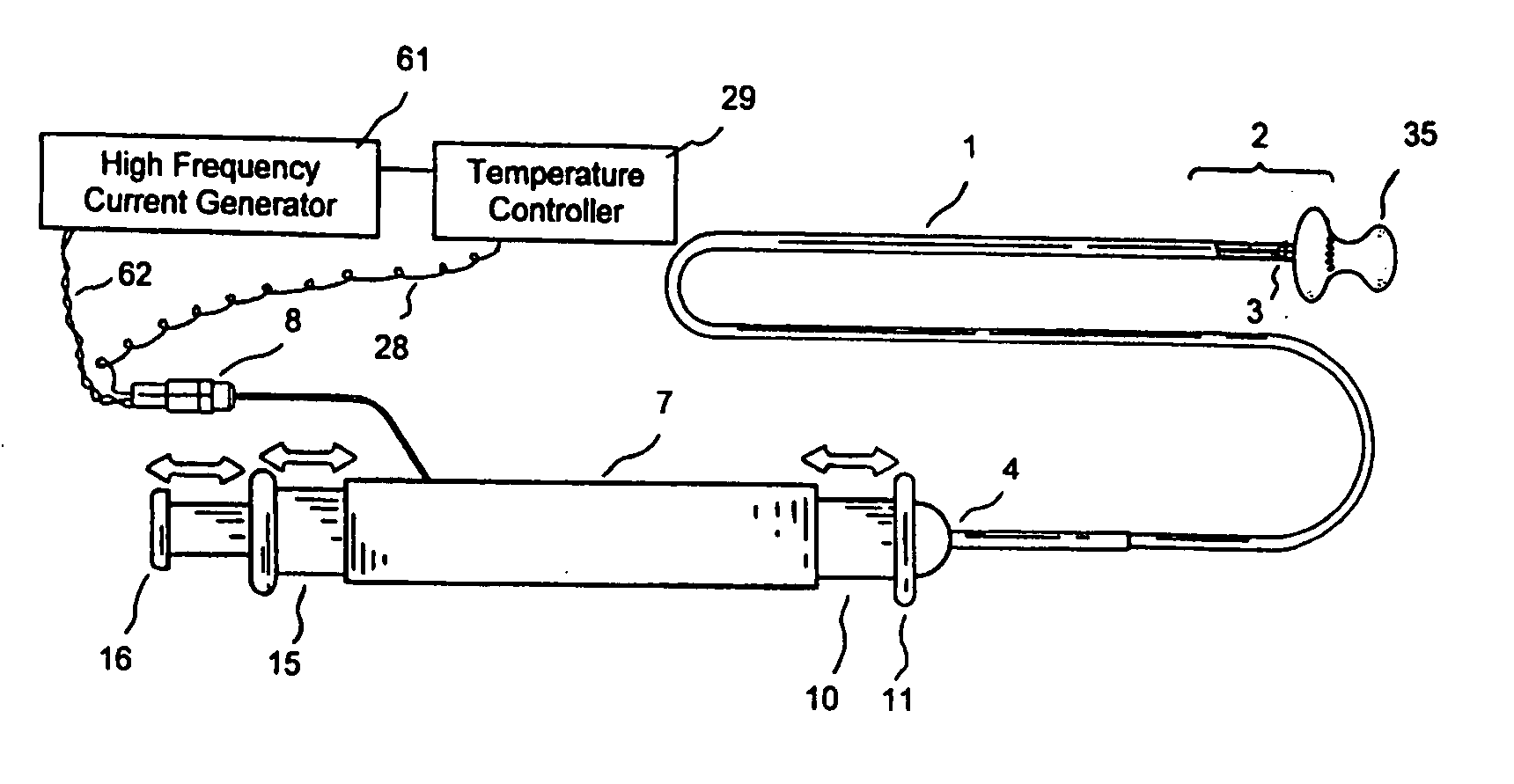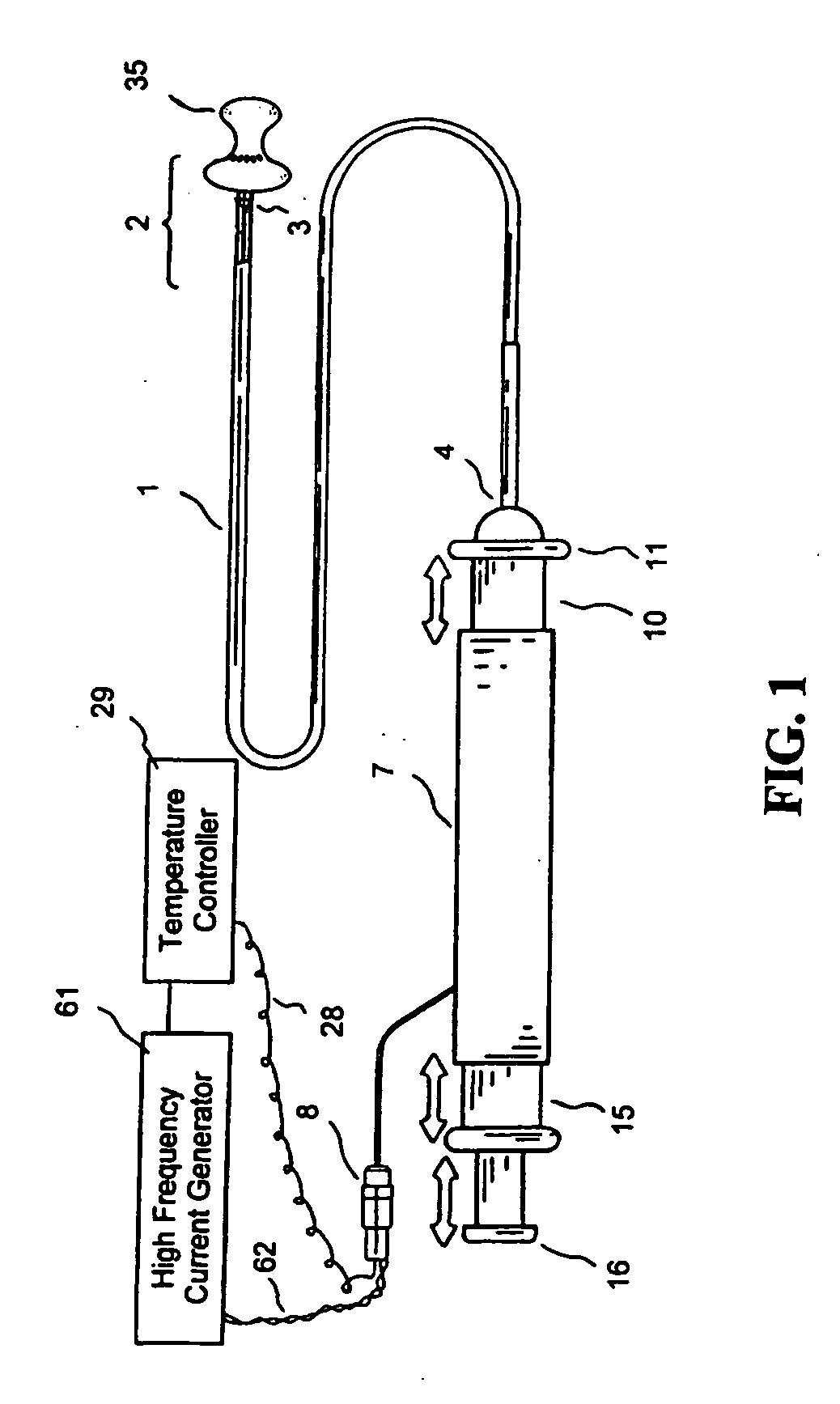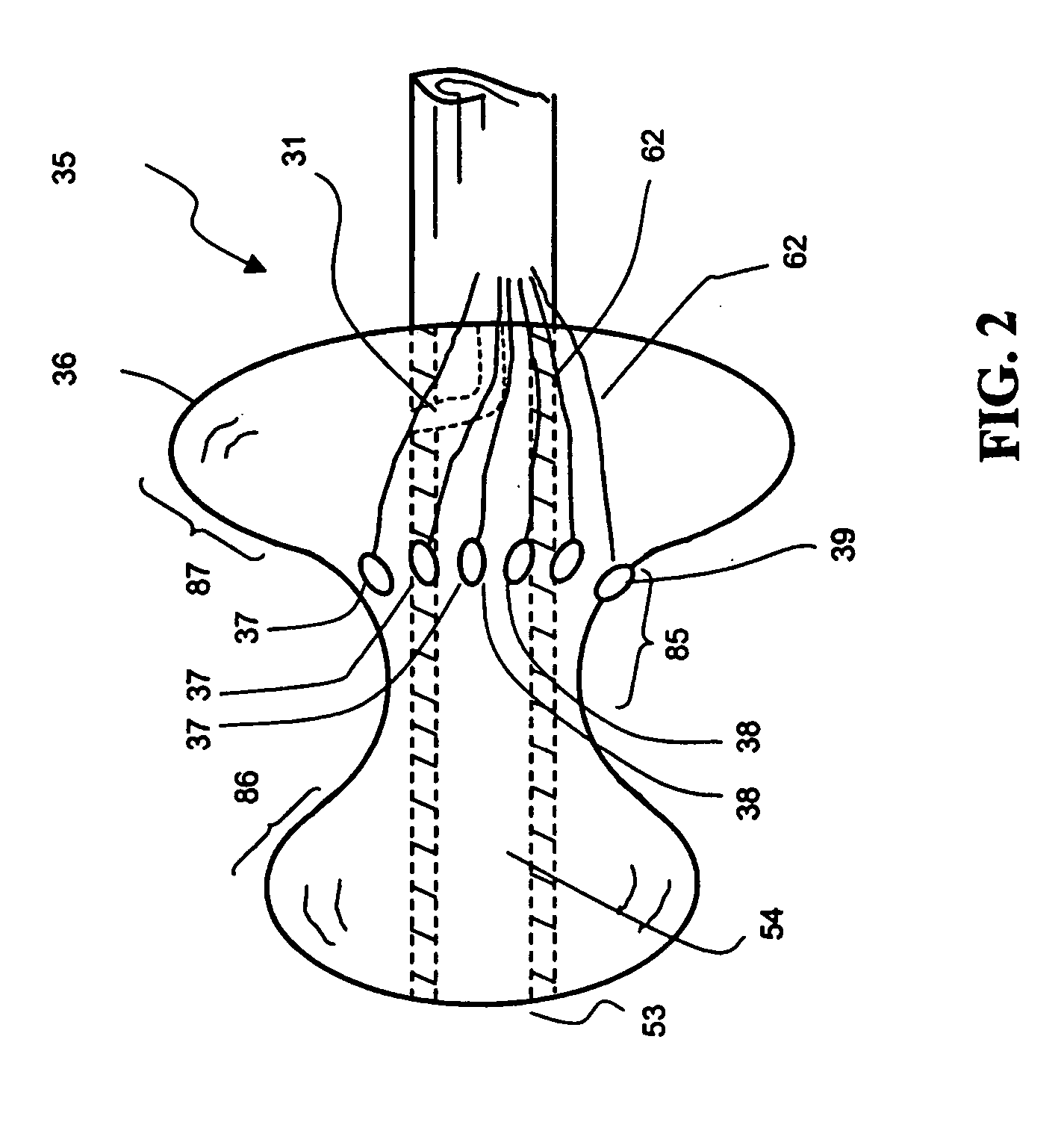Methods for treating mitral valve annulus with biodegradable compression element
a compression element and mitral valve technology, applied in the field of ablation catheter or probe system, can solve the problems of end-organ failure, severe lifestyle restrictions, death of patients, etc., and achieve the effects of reducing and/or shrinking, enhancing tissue shrinkage, and high frequency energy
- Summary
- Abstract
- Description
- Claims
- Application Information
AI Technical Summary
Benefits of technology
Problems solved by technology
Method used
Image
Examples
Embodiment Construction
[0058] The following descriptions of the preferred embodiment of the invention are exemplary, rather than limiting, and many variations and modifications are within the scope of the invention. What is shown in FIGS. 1 to 21 is an embodiment of the present invention to provide a treating system that selectively contacts the tissue of an annulus in order to tighten and stabilize an annular organ structure adapted for repairing an annular organ structure defect of a patient. The system may be deployed via a catheter percutaneously or via a cannula through a percutaneous intercostal penetration or applied directly to the annular organ via open surgical access. The annular organ structure or the annulus to be treated may be selected from the group consisting of a mitral valve, a tricuspid valve, a pulmonary valve, an aortic valve, a venous valve, and a sphincter.
[0059]“Sandwich” as a verb is herein meant to place an object between usually two things of another quality or character; part...
PUM
 Login to View More
Login to View More Abstract
Description
Claims
Application Information
 Login to View More
Login to View More - R&D
- Intellectual Property
- Life Sciences
- Materials
- Tech Scout
- Unparalleled Data Quality
- Higher Quality Content
- 60% Fewer Hallucinations
Browse by: Latest US Patents, China's latest patents, Technical Efficacy Thesaurus, Application Domain, Technology Topic, Popular Technical Reports.
© 2025 PatSnap. All rights reserved.Legal|Privacy policy|Modern Slavery Act Transparency Statement|Sitemap|About US| Contact US: help@patsnap.com



